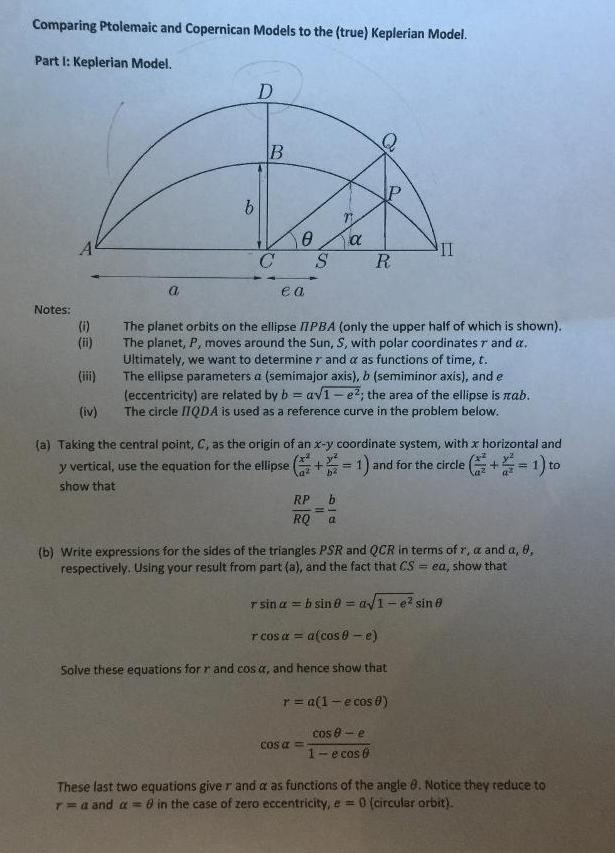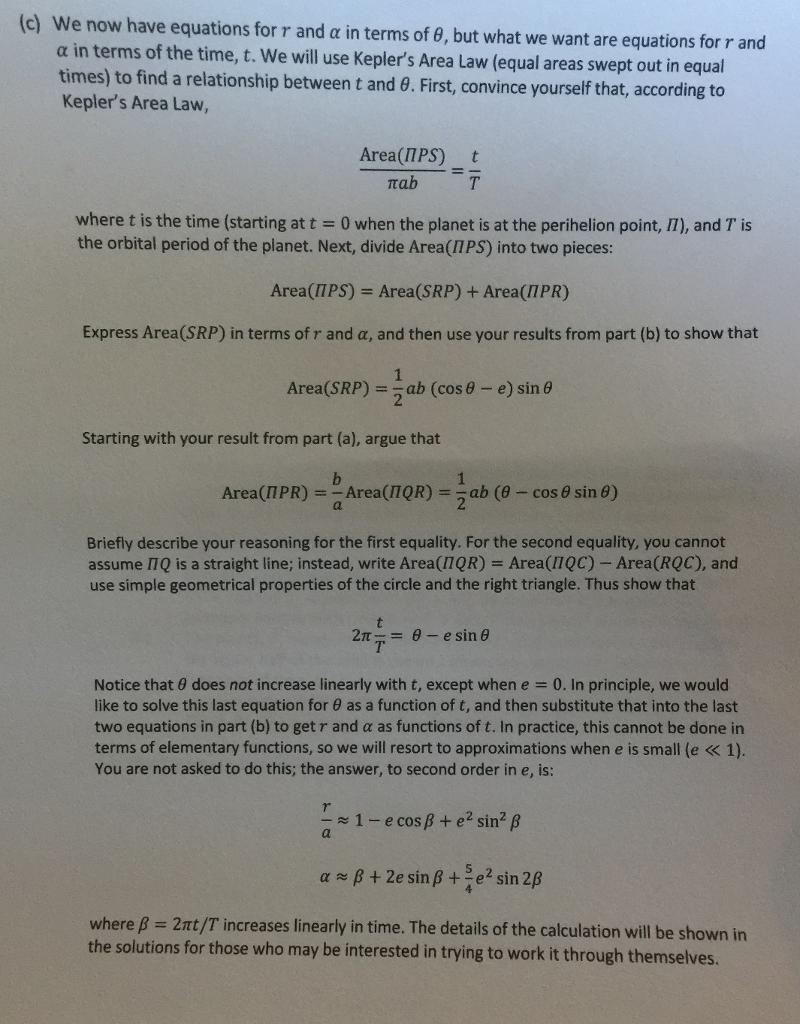Answered step by step
Verified Expert Solution
Question
1 Approved Answer
Comparing Ptolemaic and Copernican Models to the (true) Keplerian Model. Part I: Keplerian Model. D B a A II R e a Notes: (i)


Comparing Ptolemaic and Copernican Models to the (true) Keplerian Model. Part I: Keplerian Model. D B a A II R e a Notes: (i) (fi) The planet orbits on the ellipse IPBA (only the upper half of which is shown). The planet, P, moves around the Sun, S, with polar coordinates r and a. Ultimately, we want to determine r and a as functions of time, t. The ellipse parameters a (semimajor axis), b (semiminor axis), and e (eccentricity) are related by b = av1- e2; the area of the ellipse is nab. The circle IIQDA is used as a reference curve in the problem below. (ii) (iv) (a) Taking the central point, C, as the origin of an x-y coordinate system, with x horizontal and y vertical, use the equation for the ellipse (+= 1) and for the circle to %3D %3D show that RP RQ (b) Write expressions for the sides of the triangles PSR and QCR in terms of r, a and a, 8, respectively, Using your result from part (a), and the fact that CS = ea, show that r sin a = b sin a = av1- e? sin e !! r cos a = a(cos 8 -e) Solve these equations for r and cos a, and hence show that r= a(1-e cos 0) Cos e-e 1-e cos 6 Cos a = These last two equations giver and a as functions of the angle 0. Notice they reduce to T=a and a=6 in the case of zero eccentricity, e= 0 (circular orbit). 10 (c) We now have equations for r and a in terms of 0, but what we want are equations for r and a in terms of the time, t. We will use Kepler's Area Law (equal areas swept out in equal times) to find a relationship between t and 0. First, convince yourself that, according to Kepler's Area Law, Area(IPS) nab where t is the time (starting at t = 0 when the planet is at the perihelion point, II), and T is the orbital period of the planet. Next, divide Area(IPS) into two pieces: Area(IIPS) = Area(SRP) + Area(IIPR) Express Area(SRP) in terms ofr and a, and then use your results from part (b) to show that Area(SRP) = 1. ab (cos 0- e) sin 6 Starting with your result from part (a), argue that Area(IPR) =Area(IIQR) =ab (8- cos e sin 6) a Briefly describe your reasoning for the first equality. For the second equality, you cannot assume IIQ is a straight line; instead, write Area(I1QR) = Area(I1QC)- Area(RQC), and use simple geometrical properties of the circle and the right triangle. Thus show that 2n - = 0 - e sin 0 Notice that 0 does not increase linearly with t, except when e = 0. In principle, we would like to solve this last equation for 0 as a function of t, and then substitute that into the last two equations in part (b) to get r and a as functions of t. In practice, this cannot be done in terms of elementary functions, so we will resort to approximations when e is small (e 1). You are not asked to do this; the answer, to second order in e, is: 1-e cos B + e? sin? B a a = + 2e sin +e2 sin 2B where B = 2nt/T increases linearly in time. The details of the calculation will be shown in the solutions for those who may be interested in trying to work it through themselves.
Step by Step Solution
★★★★★
3.44 Rating (163 Votes )
There are 3 Steps involved in it
Step: 1
0 From a 3D 1y rax Ther 6 Then Rp y 6 Ta x and RG TarxL RP Hence 3D 6 Note that R...
Get Instant Access to Expert-Tailored Solutions
See step-by-step solutions with expert insights and AI powered tools for academic success
Step: 2

Step: 3

Ace Your Homework with AI
Get the answers you need in no time with our AI-driven, step-by-step assistance
Get Started


